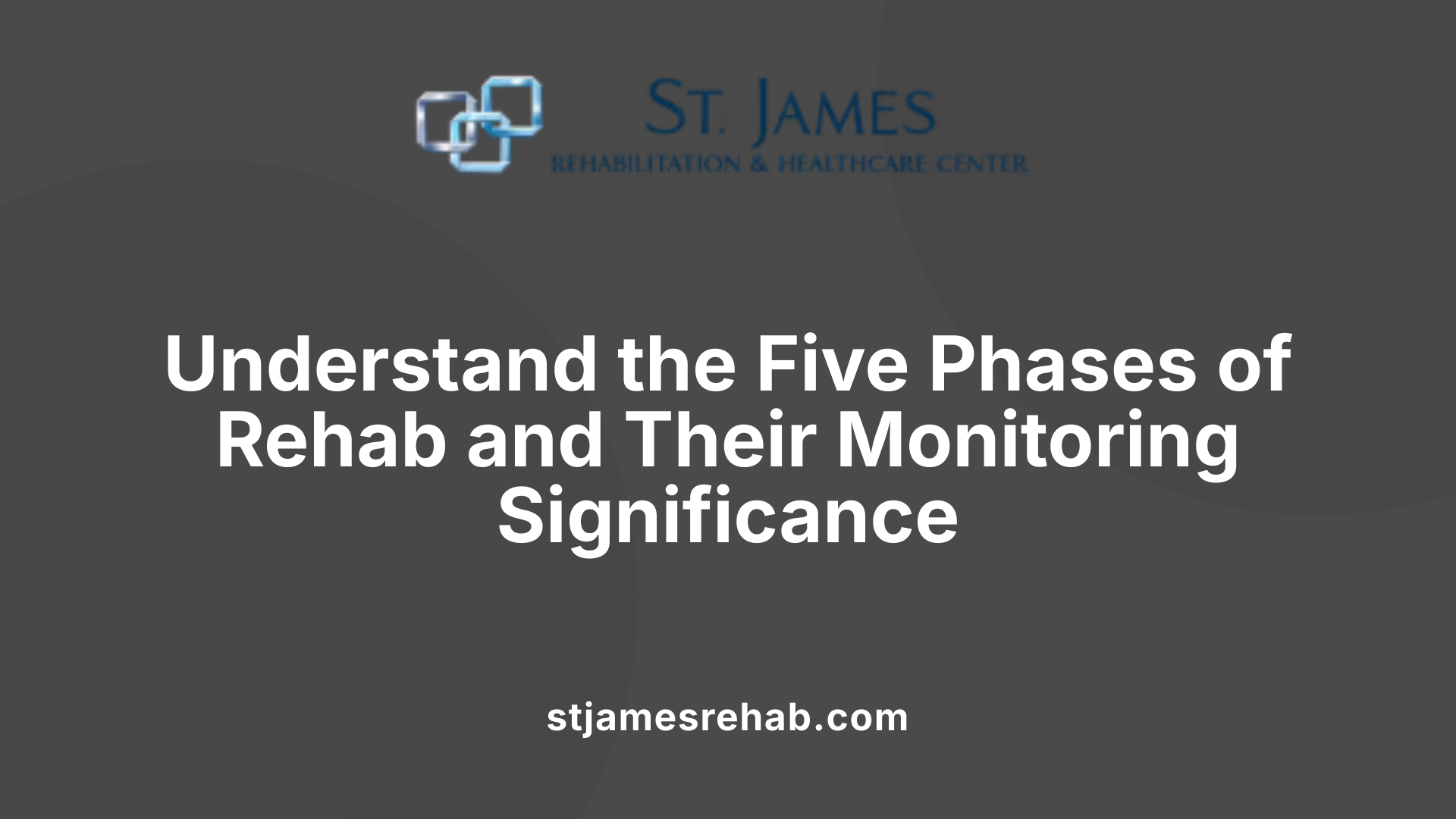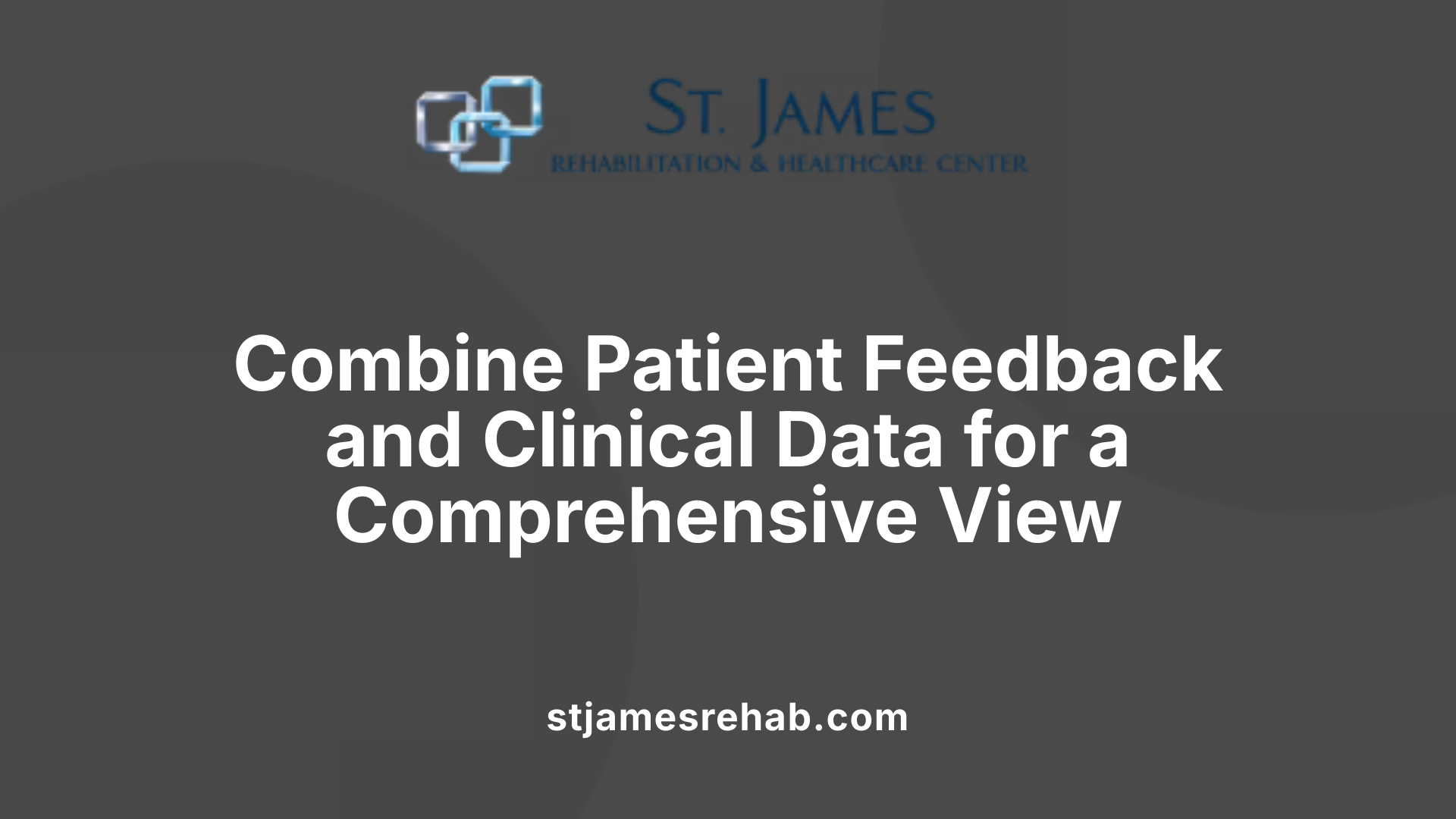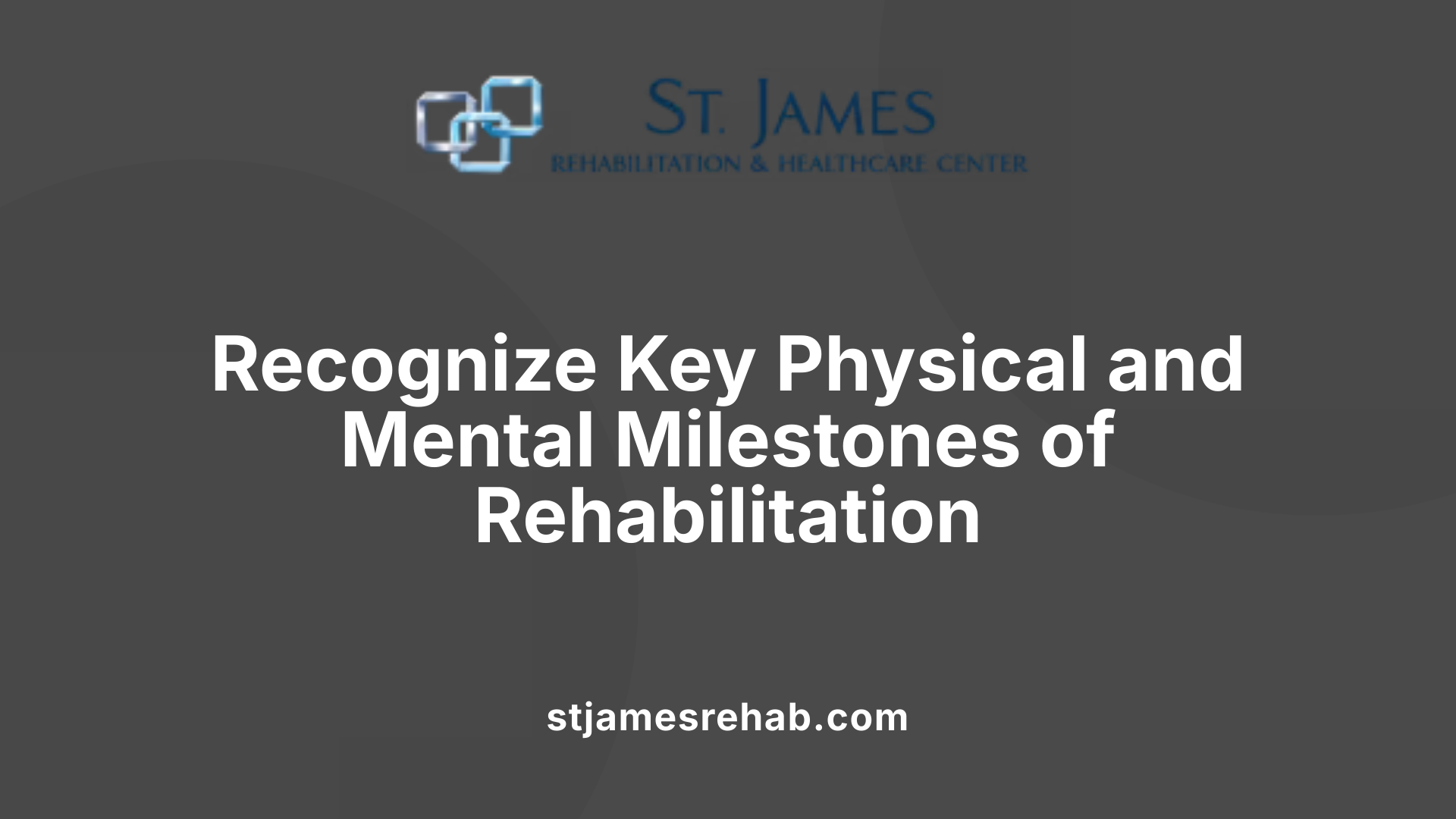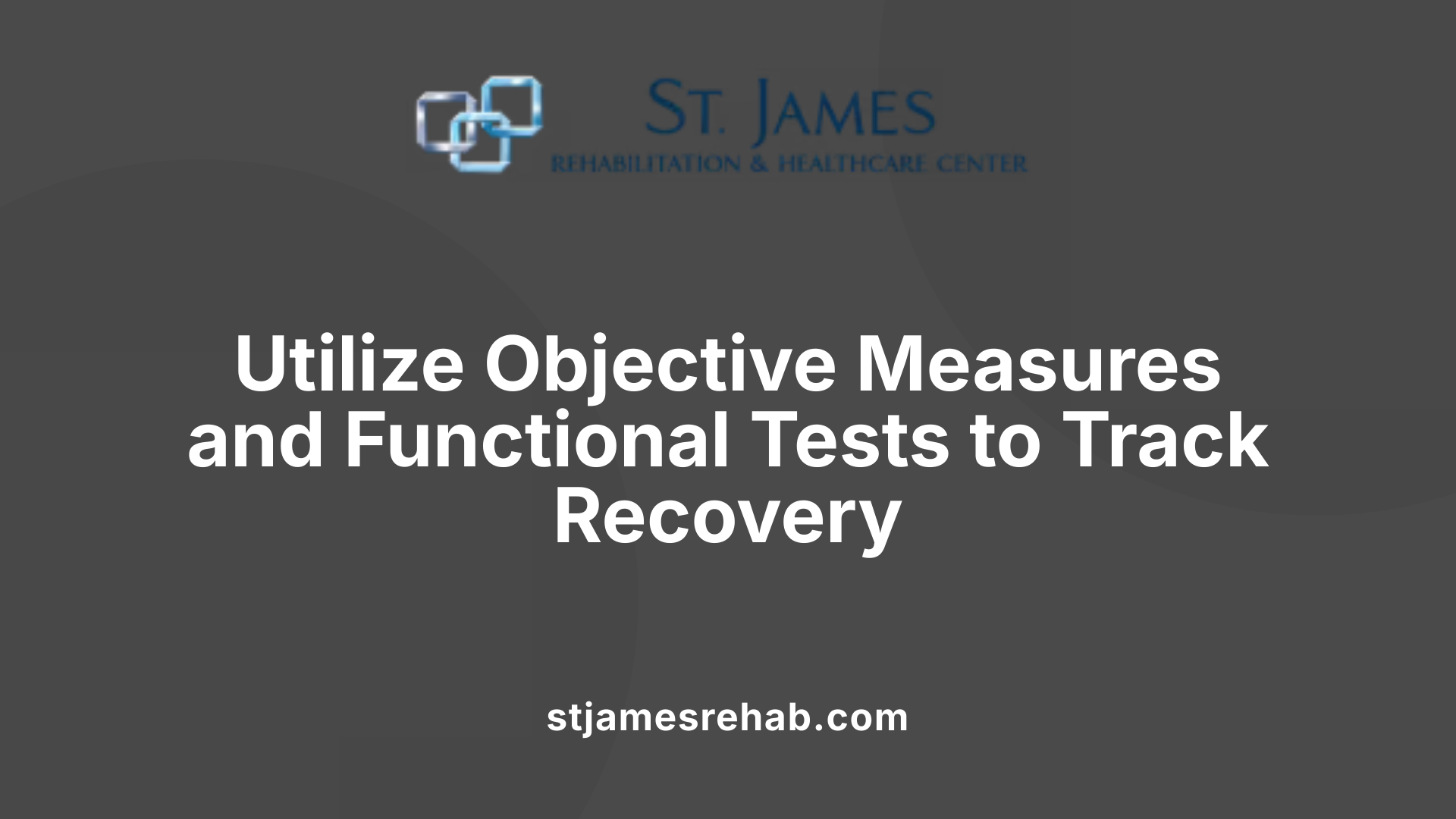How to identify early signs of progress in rehabilitation
Early Indicators of Successful Rehabilitation Progress

Understanding the Path to Recovery
Identifying the early signs of progress during rehabilitation is crucial for both patients and clinicians. It helps confirm that treatment strategies are effective, motivates patients by showcasing tangible improvements, and guides necessary adjustments to optimize outcomes. Recognizing these signs requires a comprehensive assessment of physical, emotional, and functional milestones, supported by objective data and patient feedback. This article explores the key indicators, assessment methods, and strategies used to measure and encourage early progress in rehabilitation.
Phases of Rehabilitation and Their Significance in Tracking Progress

What are the general phases of the rehabilitation process?
The rehabilitation journey usually involves five main stages, each marked by specific goals and milestones. The initial phase centers on reducing pain and swelling through methods like Rest, Ice, Compression, and Elevation (RICE). This stage may include modalities such as electrical stimulation to manage symptoms effectively.
The second phase focuses on restoring the normal range of motion and flexibility. Targeted stretching exercises help regain mobility, which is essential for progressing to later stages.
In the third phase, the emphasis shifts towards rebuilding strength and initiating proprioception and balance training. Improving these aspects helps the patient regain control over their movements and prepares them for functional activities.
The fourth phase involves sport-specific and functional training. This stage aims to rebuild coordination, simulate real-life or sport scenarios, and minimize the risk of further injury.
The final stage prepares the individual to return fully to their normal activities or sports. This phase includes gradual, progressive exercises tailored to the specific demands of the activity, ensuring safety and effectiveness.
Throughout all these stages, consistent assessment and monitoring are vital. They guide progression, help adjust treatment plans, and confirm readiness to advance to the next phase.
Role of assessment in guiding each phase
Assessment tools are integral in determining how well a patient is responding to treatment. Regularly evaluating pain levels, range of motion, strength, balance, and functional ability helps clinicians decide if the patient is ready to move on.
Objective measures such as dynamometers for strength and motion analysis devices provide quantifiable data. Patient feedback on pain and confidence levels complements these indicators, offering a comprehensive view.
Effective assessment supports personalized treatment adjustments, reducing the risk of setbacks and promoting efficient recovery.
Key milestones indicative of progression
Identifiable milestones signal meaningful progress. Early signs include decreased pain and swelling, improved range of motion, and increased strength. Patients start performing basic movements like walking, standing longer, or climbing stairs without discomfort.
As recovery continues, milestones such as being able to bear more weight, navigate uneven surfaces, and perform functional tasks—like carrying groceries or climbing stairs—become evident.
Advanced indicators include returning to sport-specific drills, achieving proper movement patterns without favoring one side, and passing functional tests such as the single-leg hop test.
Finally, psychological readiness—feeling confident and secure in movement—alongside physical improvements, marks the culmination of successful rehabilitation. Tracking these milestones helps both clinicians and patients stay motivated and aligned with recovery goals.
Objective and Subjective Measures to Track Early Improvements

How can progress in physical therapy be measured objectively?
Tracking recovery in physical therapy involves both observable clinical data and patient input. Objective assessments include measuring pain levels, range of motion, muscle strength, and functional abilities with standardized tools and tests. For instance, clinicians may use devices like isokinetic dynamometers to evaluate strength or goniometers for flexibility.
In addition to these measures, initial improvements such as increased movement, less swelling, and enhanced coordination are monitored through physical tests. Regular evaluations help determine if progress meets expected milestones and guide adjustments.
Patient self-reports complement clinical data. Patients describe their experiences of discomfort, ease of movement, and ability to perform everyday tasks. Validated questionnaires and scales—such as pain intensity scales or activity diaries—collect this subjective info.
When patients notice reduced pain and improved mobility, combined with positive observations by therapists, it indicates effective progress. Conversely, a lack of change or worsening symptoms signals the need to reevaluate treatment.
Long-term goals, like returning to hobbies or independence, serve as meaningful indicators of recovery. If progress plateaus, clinicians analyze both objective measurements and patient feedback to adapt strategies. This dual approach ensures a comprehensive view of how well the rehabilitation is progressing and helps maintain motivation and focus.
Physical and Psychological Milestones Signaling Recovery

What are the key indicators of recovery during rehabilitation?
Recovery during rehabilitation is a comprehensive process that involves multiple signs showing progress in both physical and mental aspects. Physically, reductions in pain and stiffness are often the first indicators; patients typically notice less discomfort and increased ease in movement early on. Improvements in range of motion and flexibility, alongside early signs of better balance and coordination, also signal positive changes.
As therapy progresses, physical strength and neuromuscular control enhance, allowing patients to perform daily tasks more comfortably. Being able to put more weight on the affected limb and moving naturally without favoring one side are important milestones that reflect tissue healing and improved motor control.
Functional abilities such as climbing stairs, standing for long periods, or carrying groceries become easier, indicating functional recovery. Objective tests like the single-leg hop test further help determine readiness to return to sports or work.
On the psychological side, confidence in movement and emotional stability are crucial indicators. Feeling secure while moving and perceiving oneself as stronger show mental recovery and increased self-efficacy. Recognizing progress, such as decreased pain frequency, better posture, and improved body awareness, reinforces motivation.
To summarize, effective recovery involves visible physical improvements—less pain, better movement, increased strength—and psychological milestones like confidence and emotional resilience. Monitoring these signs helps tailor treatment plans and encourages patients to stay committed to their rehabilitation journey.
| Physical Signs | Psychological Signs | Additional Indicators |
|---|---|---|
| Reduced pain and stiffness | Confidence in movement | Ability to perform daily activities comfortably |
| Improved range of motion | Emotional stability | Return to pre-injury activity levels |
| Enhanced balance and coordination | Increased self-esteem | Long-term habit formation in health practices |
| Increased strength and muscle control | Positive self-reflection | Patient engagement and goal setting |
| Better posture and mobility | Feeling of well-being | Less reliance on pain medications |
Overall, these milestones reflect a successful rehabilitation process that aims for full functional, physical, and mental recovery.
Assessment Tools and Functional Tests for Monitoring Progress

How do physical therapists assess early improvements in rehabilitation?
Physical therapists use a variety of methods to track early signs of recovery. They combine direct observation of movement, patient feedback, and standardized tools like Goal Attainment Scaling (GAS) and PROMIS assessments.
In initial and follow-up sessions, therapists evaluate muscle strength, flexibility, balance, and overall mobility. These assessments help establish a baseline and observe improvements over time. For example, increased range of motion or better posture and alignment are positive indicators.
Progress is also monitored through routine checklists that record changes in pain levels, swelling, and functional ability. In critical care settings, therapists assess vital signs and the patient’s ability to engage in therapy activities—early signs of positive response.
By continuously reviewing these measures, therapists can identify when the patient is improving, stagnating, or experiencing setbacks, which guides necessary modifications in the treatment plan. This structured approach ensures early identifiable signs of progress are recognized promptly, supporting optimal recovery.
Which standardized assessment tools are used to evaluate rehabilitation progress?
Tools like Goal Attainment Scaling (GAS) allow therapists and patients to set personalized goals and measure the extent to which these goals are achieved. PROMIS (Patient-Reported Outcomes Measurement Information System) tools provide insights into perceived physical and mental health status from the patient's perspective.
Tables of assessment tools commonly used include:
| Tool | Purpose | Measurement Focus |
|---|---|---|
| Goal Attainment Scaling (GAS) | Personalized goal tracking | Individualized functional goals |
| PROMIS 29 | Patient self-report on health status | Pain, fatigue, physical function, mental health |
| Physical Tests | Functional ability and strength assessment | Movement quality, endurance, balance |
These measures help therapists quantify progress and inform treatment adjustments.
What functional movement evaluations are performed?
Routine functional tests include walking, bending, squatting, and stair climbing. Observing how well a patient performs these activities reveals their ability to move naturally without favoring one side.
For example, the single-leg hop test can gauge readiness to return to sports or work. Improved performance in these activities signifies increased strength, flexibility, and coordination.
Patients demonstrating easier performance with correct form and less discomfort are showing signs of ongoing recovery. Conversely, persistent difficulty or asymmetry may indicate areas needing further rehab.
How do therapists identify when to adjust treatment plans?
Plateaus—times when progress stalls—are typical in rehabilitation. Therapists look for signs like persistent pain, limited gains in range of motion, or inability to perform functional tasks.
When these indicators appear, adjusting the approach might involve increasing exercise complexity, emphasizing targeted strength training, or incorporating more proprioceptive exercises. Regular evaluations ensure that the program remains aligned with the patient’s evolving needs.
Tracking progress with outcome measures and functional tests ensures therapists can respond effectively, promoting continuous improvement and preventing setbacks.
Determining Progress or Regression and Adjusting Treatment Plans
How is the progression or regression of rehabilitation determined?
Monitoring progress in rehabilitation involves regular and structured evaluations of several key factors. Clinicians assess the patient's physical abilities, including strength, mobility, balance, and range of motion, alongside pain levels and overall function.
Objective tests and patient-reported outcomes are essential tools in this process. For instance, performance-based measures like the single-leg hop test or timed walking assessments provide concrete data on functional capacity. Meanwhile, patient feedback on pain intensity, frequency, and activity-related discomfort helps gauge subjective improvements.
During each assessment, therapists look for signs of progress such as increased strength, better coordination, reduced swelling, and improved movement quality. Conversely, setbacks like persistent pain, lack of movement improvement, or worsening symptoms indicate potential regression. Based on these insights, treatment plans are adjusted.
If progress is evident, exercises may be intensified, complexity increased, or movement goals made more challenging. Conversely, if setbacks occur, therapy intensity may be decreased, or focus shifted to more fundamental activities. Considering the patient’s overall health, confidence, and ability to perform daily tasks ensures that adjustments support safe and effective recovery.
Ultimately, the tailored approach aims to promote continuous improvement while safeguarding against injury or frustration, empowering patients to regain function steadily and confidently.
Supporting Long-Term Recovery and Motivation
Recognizing early signs of progress in rehabilitation allows both patients and clinicians to celebrate milestones, tailor interventions, and maintain motivation. Employing a combination of subjective feedback, objective assessments, functional tests, and behavioral indicators provides a comprehensive picture of recovery. Regular evaluations not only verify effectiveness but also identify when strategies need adjustment, helping patients regain their independence and confidence. Ultimately, understanding and tracking these early signs ensure a more efficient rehabilitation journey, paving the way for sustained health and activity.
References
- Rehabilitation Milestones: How to Know You're on Track — TV PT
- How to Know You're Getting Better in Physical Therapy
- How Do You Know if Physical Therapy is Working?
- How Does Your Physical Therapist Assess Your Progress?
- The Importance of Tracking Progress in Rehabilitation and Patient
- 10 Signs You Need Functional Rehabilitation
- 9 Signs Physical Therapy is Working...and You Are Recovering






